CAA News Today
Join a CAA Professional Committee
posted by CAA — June 15, 2020
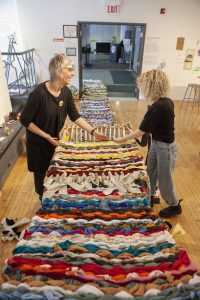
Artist Jill Odegaard (left) and participant work on Woven Welcome as part of ARTexchange at the 2020 Annual Conference, an event organized by CAA’s Services to Artists Committee. Photo: Stacey Rupolo
Call for applicants to CAA’s Professional Committees (for term 2021-2024)
The Professional Committees address critical concerns of CAA’s members. Each Professional Committee works from a charge that is put in place by the Board of Directors. Committee members serve three-year terms, with the term of service beginning and ending at the CAA Annual Conference. Candidates must be current CAA members, or be so by the start of their committee term and possess expertise appropriate to the committee’s work. All committee members volunteer their services without compensation. It is expected that once appointed to a committee, a member will attend committee meetings (including an annual business meeting at the conference), participate actively in the work of the committee, and contribute expertise to defining the current and future work of the committee. For many CAA members, service on a Professional Committee becomes a way to develop professional relationships and community outside of one’s home institution, and to contribute in meaningful ways to the pressing professional issues of our moment.
The following Professional Committee are open for terms beginning in February 2021. Please click on the links in order to review the charge of each committee, as well as the roster of current committee leadership and members:
- Committee on Design
- Committee on Diversity Practices
- Committee on Intellectual Property
- Committee on Research and Scholarship
- Committee on Women in the Arts
- Education Committee
- International Committee
- Museum Committee
- Professional Practices Committee
- Services to Artists Committee
- Services to Historians of Visual Arts Committee
- Student and Emerging Professionals Committee
Committee applications are reviewed by the current committees, as well as CAA leadership (CAA’s President, the Vice President for Committees, and Executive Director). Appointments are made by late October, prior to the Annual Conference. New members are introduced to their committees during their respective business meetings at the Annual Conference in February 2021 in New York City.
In applying to serve on a committee, applicants commit to beginning a term in February 2021, provided that they are selected for committee service.
Prospective applicants may direct logistical questions to Vanessa Jalet (vjalet@collegeart.org). Questions about the committee charge and current work to the current committee chair and/or to the Vice President of Committees: Julia Sienkewicz (julia.a.sienkewicz@gmail.com)
Self-nominations should include a brief statement (no more than 150 words) describing your qualifications and experience, combined with an abbreviated CV (no more than 2–3 pages). These two items should be forwarded in a single PDF document emailed to: vjalet@collegeart.org
Deadline for applications: Monday, August 31, 2020
Kindly enter subject line in email: 2021 Professional Committee Applicant
CAA’s Services to Artists Committee Presents ARTexchange2020
posted by CAA — January 29, 2020
ARTexchange2020
Workshops • Performances • Exhibition
at Columbia College Chicago, Hokin Gallery, 623 South Wabash
February 12–February 24, 2020
Gallery Hours: Monday–Friday 9:00am–10:00pm; Saturday, 9:00am–5:00pm
Take part in workshops and performances facilitated by artists: Noah Breuer, Wendy DesChene + Jeff Schmuki, Jennifer Natalya Fink & Julie Laffin, Carol Flueckiger, Visda Goudarzi & Artemi-Maria Gioti, MiHyun Kim, Jill Odegaard, Lydia See, Christine Stiver.
View dynamic installations co-created with the public. Visitors can interact with many of the installations even when facilitating artists are not present. Come by every day to see how the space changes. Workshops and events are “drop-in” friendly. You can come and go for any time during facilitated workshops.
CAA’s Services to Artists Committee (SAC), in collaboration with the “Hokin Project,” a gallery management practicum course at Columbia College Chicago, presents ARTexchange 2020 as an opportunity for artists to share their work and build affinities with other artists, historians, curators, cultural producers, and the public.
The exhibition will remain on view through February 24, 2020.
For a full listing of all SAC programming at the 108th CAA conference, see here.
And don’t forget the ARTexchange Reception, Friday, February 14, 7:00pm–8:30pm.

Black Lunch Table — Wikipedia Edit-a-thon
Join us for a Wikipedia edit-a-thon hosted by the Black Lunch Table. Their initiative creates and improves articles about Black visual artists. Celebrating artists of color, women artists, and artists with disabilities, this program supports inclusion and recognition of intersectionality. No prior experience necessary. Bring a computer and a friend!
This programming is partially funded by the Office of Academic Diversity, Equity, and Inclusion, Columbia College Chicago.
Workshop times: Thursday, 10:30am–1:30pm; Friday, 10:30am–1:30pm in the Media Lounge
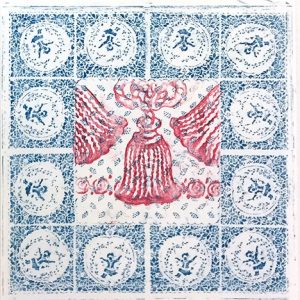
Noah Breuer – CB&S Rubbings and Print Project
Noah Breuer leads a printmaking workshop, utilizing engraved designs inspired by CB&S, his great-great-grandfather’s textile factory that was seized along with all Jewish-owned property in German-occupied areas during WWII. Participants leave with their own book and contribute one copy for visual materials to be built upon by the next participants.
Workshop times: Wednesday, 4:00pm–6:00pm; Thursday, 4:00pm–6:00pm; Friday, 12:00pm–2:00pm
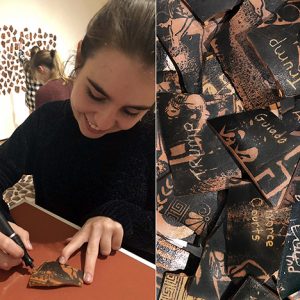
Wendy DesChene + Jeff Schmuki – Ostraka
Join DesChene and Schmuki in celebration of our fundamental right to vote through Ostraka, a collaborative installation that mirrors a 5th-century BC Athenian tradition, where citizens would inscribe the name of a person they wanted to politically neutralize on a shard of broken pottery called an ostrakon.
Workshop times: Wednesday, 2:00pm–4:00pm; Friday, 12:00pm–2:00pm
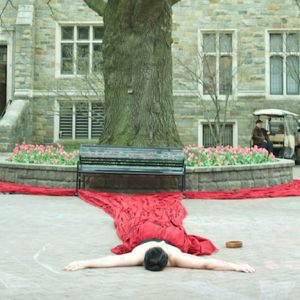
Jennifer Natalya Fink & Julie Laffin – UNDERBELLY
Join artists Fink and Laffin in a performance and “modern suffragette” march, retracing the steps of historical suffrage parades. Airing some dirty laundry to expose the underbelly of the movement, participants will wear two-sided sashes imprinted with both positive and negative statements related to the suffragette movement and voting rights.
Performance time: Thursday, 4:00pm–6:00pm
If you want to be a modern suffragette and participate in the march, sign up here to be contacted by the artists. Meet at the Hokin Gallery at 3:40 pm. Don’t forget to dress weather appropriate.
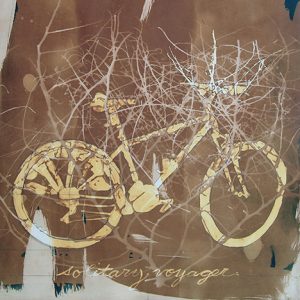
Carol Flueckiger – Solitude of Selfie
Flueckiger’s project explores Elizabeth Cady Stanton’s 19th century women’s suffrage address “Solitude of Self”. Participants will be prompted to engage with Stanton’s speech and make response drawings. Works will be pinned to the wall and later scanned and integrated into a book honoring the 100th anniversary of the 19th amendment.
Workshop times: Wednesday, 9:00am–11:00am; Friday, 9:00am–11:00am
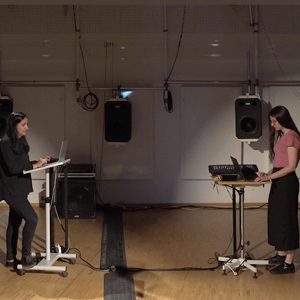
Visda Goudarzi & Artemi-Maria Gioti – Soundsourcing
Soundsourcing is a participatory performance orchestrated by artists Goudarzi and Gioti. In this collaborative sound performance, audience members contribute vocal sounds (words, phonemes and noises) which are picked up by two condenser microphones and processed by laptop performers in real-time. The artists invite participation in this unique sound creation process.
Performance time: Friday, 7:00pm–8:00pm
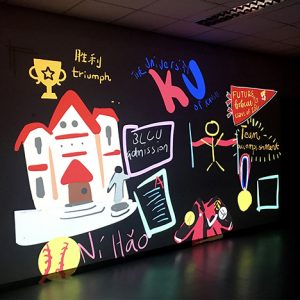
MiHyun Kim – Stories Become Data
Stories Become Data is an interactive digital environment that invites participants to add their own stories to a collective narrative. MiHyun Kim will lead a workshop utilizing iPads and projection to create a space for participants to share and to visualize their stories collectively and simultaneously through real time.
Workshop time: Friday, 2:00pm–4:00pm
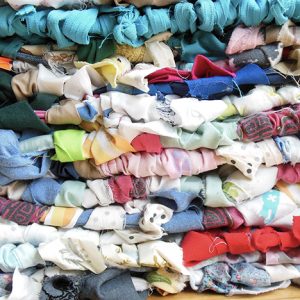
Jill Odegaard – Woven Welcome
Woven Welcome is a community-based art project that utilizes the form of a woven rug as a statement of the interconnectedness of individuals. Join artist Jill Odegaard in creating this artistic metaphor, and engage in a dialogue with other conference attendees and community members.
Workshop times: Wednesday, 6:00pm–10:00pm; Friday, 9:00am–12:00pm
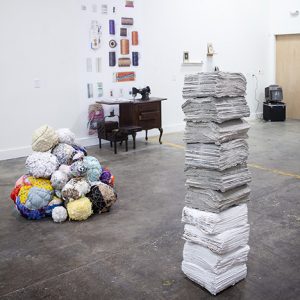
Lydia See – BMC Playbook
Lydia See’s BMC Playbook encourages the examination and manipulation of materials, space, and the collective spirit. This collaborative project, resulting in an installation in the Hokin Gallery, includes a series of chance operations based on a generative BMC card game, inspired by material study workshops at Black Mountain College.
Workshop time: Thursday, 4:00pm–6:00pm
Materials and instructions are available outside facilitated workshop times for the entire exhibition.
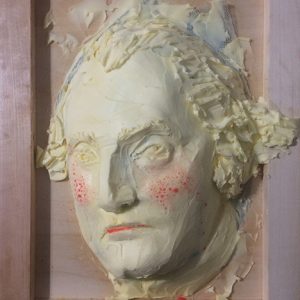
Christine Stiver – Banquet Art
Stiver’s participatory performance Banquet Art is modeled after one of Caroline Shawk Brooks’ own sculpting demonstrations in which she sculpted one face after another on the same bust of butter. Participants will sculpt a series of portraits, starting with Napoleon and George Washington, a litany of “great leaders” will follow.
Workshop time: Friday, 4:00pm–8:00pm
Ongoing
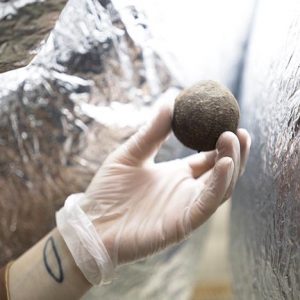
Graduate Student Screenings
A curated selection of current MA/MFA videos/digital artworks, premieres at the Media Lounge Wednesday. Participating artists: ANDiLAND, Jorge Bañales, Andrea Bagdon, Jacklyn Brickman/Heather Taylor, Christian Casas, Danielle Damico, Jesse Egner, Caleb Engstrom, Mary Gring, Selena Ingram, Bibiana Medkova, Carolina Montejo, Strange Lens, Maria V, F. C. Zuke
Announcing New CAA Professional Committees
posted by CAA — August 08, 2019
CAA is pleased to announce the creation of two new professional committees: a Committee on Research and Scholarship, and a Services to Historians of Visual Arts Committee. The new committees were approved by the Board of Directors at their May 2019 meeting. Concurrent with our annual call for new committee members, we seek applicants to form the inaugural teams for these two new committees.
The deadline for these applications is October 1, 2019, for new committee service to begin at the Annual Conference in February 2020.
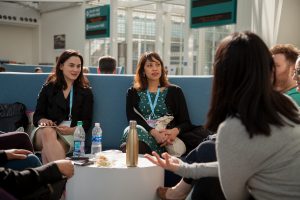
Discussion group at 2018 CAA Annual Conference. Photo: Rafael Cardenas
The formation of these new committees responds to requests from our membership and to a desire to be forward-looking in addressing the professional needs of our fields.
The Committee on Research and Scholarship will offer a resource to all members engaged in the production or consumption of scholarly research.
The Services to Historians of Visual Arts Committee will identify and address concerns facing the historian members of our organization (encompassing specialists in any facets of art, architecture, design, material culture, and visual culture).
The Services to Historians of Visual Arts Committee is intended to recognize our organization’s enduring support for historians, offering them a presence and a voice similar to the role played by other profession-specific committees in our organization (such as the Services to Artists Committee and the Committee on Design). As noted in the committee charge, the Services to Historians of Visual Arts Committee “offers a forum for the discussion of issues of mutual interest across the discipline’s many diverse fields and methodologies. In a climate of great threat to the survival of history of art and history of visual arts programs, this committee provides a locus for advocacy issues particular to historians in these areas of interest.” It is understood that the committee will play an active role in the Annual Conference but is also intended to serve as a central hub and resource for communication among historians of the visual arts well beyond the chronology of conference programming.
As stated in the committee charge, the Committee on Research and Scholarship is charged with “gathering information, [and] assessing and proposing organizational advocacy for CAA on matters concerning the research and scholarship in visual arts and design, encompassing all facets of research regarding history, theory, education and practice.” Specialists in the visual arts—whether practitioners or historians—face unique challenges in the production of their scholarship, such as the cost of image permissions, the closures or reorganization of academic presses, and/or the misalignment of the multiyear workflow of exhibitions or excavations against the strictures of a tenure clock. A scholar’s type of institutional affiliation, or independent scholar status, has an enduring impact on the types of research and scholarship that can be produced—arguably in more profound ways than in other humanities or arts fields. The Committee on Research and Scholarship will provide a vital hub to our members interested in addressing any of these areas of concern—or advancing other concerns or questions concerning the area of research and scholarship.
If you wish to apply for either of these new committees, send an email to Vanessa Jalet at vjalet@collegeart.org with a brief statement of interest and attach a reduced résumé (no more than 2-3 pages).
Kindly also enter in the subject line: “Applicant for Committee on Research and Scholarship” or “Applicant for Services to Historians of Visual Arts Committee”
Deadline: October 1, 2019
Committee on Research and Scholarship Charge
The Committee on Research and Scholarship is charged with gathering information, assessing trends, and proposing organizational advocacy for CAA on matters concerning the advancement of research and scholarship in visual arts and design, encompassing all facets of research regarding history, education, and practice. Recognizing that professionals must navigate a rapidly-transforming field of options for conducting research and disseminating the results thereof, the committee is responsible for assisting the organization in engaging with current issues and serving its membership in this important facet of their professional life.
Services to Historians of Visual Arts Committee Charge
The Services to Historians of Visual Arts Committee identifies and addresses concerns facing historians of art, architecture, design, material culture, and visual culture. It creates and implements programs and events at the conference and beyond. It offers a forum for the discussion of issues of mutual interest across the discipline’s many diverse fields and methodologies. In a climate of great threat to the survival of history of art and history of visual arts programs, this committee provides a locus for advocacy issues particular to historians in these areas of interest. The Committee lends support and mentorship for both seasoned and emerging professionals. It is also charged with maintaining dialogue with other professional organizations and affiliated societies focused on the history of art, architecture, design, material culture and visual culture.
Serve on a CAA Award Jury
posted by CAA — March 28, 2019
CAA invites nominations and self-nominations for individuals to serve on ten of the fourteen juries for the annual Awards for Distinction for three years (2019–22). Terms begin in May 2019; award years are 2020–22.
CAA’s fourteen awards honor artists, art historians, authors, curators, critics, and teachers whose accomplishments transcend their individual disciplines and contribute to the profession as a whole and to the world at large.
Candidates must possess expertise appropriate to the jury’s work and be current CAA members. They should not hold a position on a CAA committee or editorial board beyond May 31, 2019. CAA’s president and vice president for committees appoint jury members for service.
Jury vacancies for spring 2019:
- The Art Journal Award: two members
- Alfred H. Barr Jr. Award: three members
- Frank Jewett Mather Award for Art Criticism: one member
- Charles Rufus Morey Book Award: two members
- Arthur Kingsley Porter Prize: two members
- CAA/AIC Award for Distinction in Scholarship and Conservation: one member
- Distinguished Artist Award for Lifetime Achievement: one member
- Distinguished Lifetime Achievement Award for Writing on Art: two members
- Distinguished Feminist Award: one member
- Distinguished Teaching of Art Award: one member
Nominations and self-nominations should include a brief statement (no more than 150 words) outlining the individual’s qualifications and experience and a CV (an abbreviated CV no more than two pages may be submitted). Please send all materials by email to Cali Buckley, CAA grants and special programs manager; submissions must be sent as Microsoft Word or Adobe PDF attachments. For questions about jury service and responsibilities, contact Tiffany Dugan, CAA director of programs and publications.
Deadline: May 13, 2019
Serve on a CAA Award Jury – Deadline Extended!
posted by CAA — April 05, 2018
CAA invites nominations and self-nominations for individuals to serve on eight of the thirteen juries for the annual Awards for Distinction for three years (2018–21). Terms begin in May 2018; award years are 2019–21. CAA’s fifteen awards honor artists, art historians, authors, curators, critics, and teachers whose accomplishments transcend their individual disciplines and contribute to the profession as a whole and to the world at large.
Candidates must possess expertise appropriate to the jury’s work and be current CAA members. They should not hold a position on a CAA committee or editorial board beyond May 31, 2018. CAA’s president and vice president for committees appoint jury members for service.
Jury vacancies for spring 2018:
- Charles Rufus Morey Book Award: two members
- Art Journal Award: one member
- Distinguished Feminist Award: one member
- Distinguished Teaching of Art Award: two members
- Distinguished Teaching of Art History Award: two members
- Artist Award for a Distinguished Body of Work: one member
- Distinguished Artist Award for Lifetime Achievement: one member
- CAA/American Institute for Conservation Award for Distinction in Scholarship and Conservation: one member
Nominations and self-nominations should include a brief statement (no more than 150 words) outlining the individual’s qualifications and experience and a CV (an abbreviated CV no more than two pages, may be submitted). Please send all materials by email to Aakash Suchak, CAA grants and special programs manager; submissions must be sent as Microsoft Word or Adobe PDF attachments. For questions about jury service and responsibilities, contact Tiffany Dugan, CAA director of programs and publications.
Deadline extended! New deadline is: Thursday, May 31, 2018.
In Memoriam: Dina Bangdel, Art Historian and CAA Board Member
posted by CAA — July 26, 2017
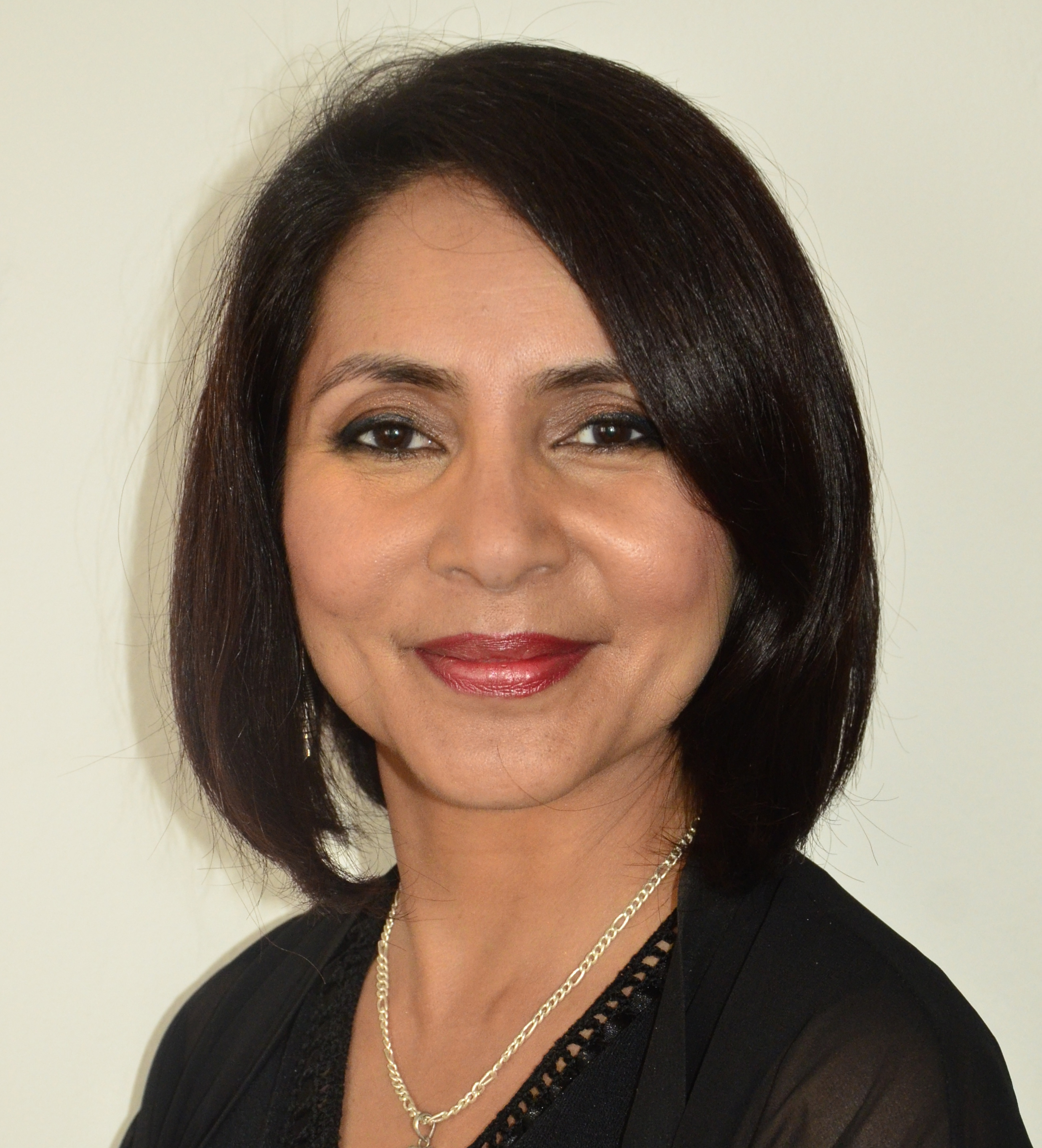
We were very sad to learn of the early and sudden passing of CAA Board Member Dina Bangdel. Dina, who was a long-standing member of CAA, joined our Board of Directors in 2016. Prior to that, she was on CAA’s Nominating Committee and served as the Board liaison to the Education Committee. In addition, Dina was active in the Student and Emerging Professionals Committee (SEPC) and the Committee on Women in the Arts (CWA). She is survived by her husband, Dr. Bibhakar Shakya, and her children, Deven and Neal.
Dina was Director of the Art History Department at Virginia Commonwealth University in Qatar. A more complete obituary can be found here.
In addition, here is a wonderful interview with her.
We will all miss her warm smile and thoughtful participation at CAA.
To send condolences to her family:
Dr. Bibhakar Shakya
3029 Crossfield Road
Richmond, VA 23233
CWA Picks for July 2017
posted by CAA — July 03, 2017
Each month, CAA’s Committee on Women in the Arts selects the best in feminist art and scholarship. The following exhibitions and events should not be missed.
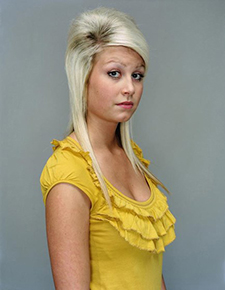
Rineke Dijkstra, Amy, The Krazy House, Liverpool, December 23, 2008, 2008 (collection of the artist)
Rineke Dijkstra: An Ode
Stedelijk Museum
Museumplein 10, 1071 DJ, Amsterdam, Netherlands
May 20–August 6, 2017
In celebration of Rineke Dijkstra’s recent honor of receiving the prestigious Hasselblad Foundation’s International Award in Photography for 2017, the Stedelijk Museum has mounted a small but excellent curated exhibit of this lauded Dutch artist. Twenty-one photographs and four videos are included in An Ode, which showcases Dijkstra’s masterful technique and remarkable sensitivity to her youthful subjects and the delicate process of their coming of age. As the artist noted, “With young people everything is much more on the surface—all the emotions. When you get older you know how to hide things.” Under her keen eye and deft hand, portraits of adolescence become something intimate and lovely and compelling.
The exhibit, which draws from Stedelijk’s own extensive collection of her work, as well as loans from the artist, is meant to be a celebration as well as an amuse-bouche for later offerings in the season. Later this year, the museum will present Dijkstra’s work Almerisa (1994–2008), a series of portraits that follows the life of a young Bosnian refugee girl from her arrival in the Netherlands to her adulthood.
Acolytes of this contemporary photographer can also see an extensive retrospective of her work at the Louisiana Museum (Copenhagen, Denmark) this fall, and then at the Museum de Pont (Tilberg, the Netherlands) in early 2018.
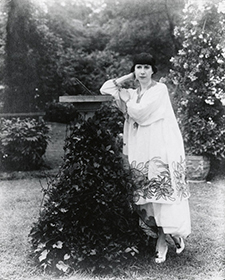
Florine Stettheimer, photograph by Peter A. Juley & Son, ca. 1917–20 (image provided by Peter A. Juley & Son Collection, Photograph Archives, Smithsonian American Art Museum, Washington, DC)
Fahrelnissa Zeid
Tate Modern
Bankside, London SE1 9TG
June 13–October 8, 2017
In the first major retrospective of her work, the Turkish artist Fahrelnissa Zeid, a pioneer in the European avant-garde of the 1940s and 1950s, dazzles. Trained in Paris and Istanbul (one of the first women to go to art school there), she produced work that synthesized historical and contemporary Middle Eastern and European artistic practices. Zeid, a princess and Muslim, cut an unusual figure in the midcentury art world. Her oeuvre is astonishingly diverse, ranging from large abstract paintings to smaller figurative pieces, and from traditional materials to new media such as chicken bones, which she painted, cast into polyester resin, and fashioned into stained-glass-like objects.
Zeid’s vibrant and energetic works were widely exhibited and enjoyed critical success, and yet her work fell into obscurity in subsequent decades. Frances Morris, the director of Tate Modern, told the Guardian of the rediscovery of her work on a 2008 trip to Istanbul, saying: “We were stunned to encounter for the first time in our lives, these huge, ornate, decorative, multifaceted, brilliantly coloured, swirling abstract paintings. We’d never seen her work in our lives and we’d never seen anything like it. It was a really exciting moment.” The retrospective of Fahrelnissa Zeid is part of the museum’s stated commitment to showcase artists of the modern era who have been overlooked and underrepresented in the art world.
Florine Stettheimer: Painting Poetry
Jewish Museum
1109 5th Ave, New York, New York
May 5–September 24, 2017
Writing for Art in America in 1980, the art historian Linda Nochlin made this assessment of Florine Stettheimer’s work: “Florine Stettheimer, the artist, existed in this world, it is true, but still somewhat apart from it––as her painting exists apart from the major currents of her time.” Stettheimer, who was born in Rochester and studied at the Art Student League of New York, is known for her affected paintings (sometimes with accompanying sculptural, scalloped frames), that reflect the comings and goings of her family—most notably her two other sisters—and a host of artists, writers, and other members of New York’s intelligentsia. Marcel Duchamp was a friend, and she was a frequent theater-goer, even designing the sets and costumes for the 1934 production of Gertrude Stein’s opera intended for an all-black cast, Four Saints in Three Acts. Oh, and she wrote poetry, which is a constant presence throughout this exhibition at the Jewish Museum. Reading her poetry, like looking at some of her works, can sometimes feel like an exhausting account of the pleasures of being one of the “haves”: “My attitude is one of Love / is all adoration / for all the fringes / all the color / all tinsel creation / I like slippers gold / I like oysters cold / and my garden of mixed flowers / and the sky full of towers / and traffic in the streets / and Maillard’s sweets / and Bendel’s clothes / and Nat Lewis hose / and Tappé’s window arrays / and crystal fixtures / and my pictures / and Walt Disney cartoons / and colored balloons.” Still, there’s a soulful seeing behind her spindly figures, especially her self-portraits and portraits of her closest family members. Taken together these paintings are a masterclass in forging an artistic path of one’s own.
Star Montana: I Dream of Los Angeles
Beta Main
114 W. 4th St., Los Angeles, CA
May 7–July 23, 2017
Star Montana’s photographs line the walls of the Main Museum’s Beta space—each a portrait of someone who the artist encountered on the streets or met through an open call. Some are friends. Most are strangers. Yet all are given a kind of monumental attention in Montana’s practice. Alongside each photograph is a small piece of writing, reflecting on the circumstances in which the picture was taken, the first time Montana met her subject, or a meditation on the vagaries of dailyness living in East and South Los Angeles. The viewer scans between words and picture, looking for the same vulnerabilities and strengths in the images that appear in the text. The colors of these photographs are lush, and the relationship between sitter and photographer is palpable, close. It is an ode to this great and complex city, as evinced through the people who live in it.
Gray Matters
Wexner Center for the Arts
Ohio State University, 1871 North High Street, Columbus, OH
May 20–July 30, 2017
Now on view at the Wexner Center for the Arts, Gray Matters brings together thirty-seven contemporary women artists exploring the practice of grisaille—the French term for working in shades of gray. “Ranging from emerging to well-established, these artists challenge an all-too-simplistic notion of colorless ‘neutrality’ as they reveal the variegated spectrum of black, white, gray, and everything in between.”
The more than fifty works include a variety of mediums and media, from sculpture to portraiture, video to graphite drawings. Among the works is Mickalene Thomas’s Hair Portrait #20 (2014). Known for her colorful canvasses, Thomas tones down her palette in Hair Portrait #20 “without relinquishing her celebratory use of rhinestones.” Also on view in the exhibition is Bethany Collin’s A Pattern or Practice (2015). In this piece the viewer is confronted with a wall installation of ninety-one blind-embossed portions of the US Department of Justice report on the Ferguson police department. “The show goes incredibly quiet with an idea that is incredibly loud,” Michael Goodson, senior curator of exhibitions, described arriving at the neatly spaced white sheets, with the words of the report pushing up the fibers of the paper.
Other artists in the exhibition include: Tauba Auerbach, Carol Bove, Gisele Camargo, Vija Celmins, Bethany Collins, Marsha Cottrell, Tacita Dean, Tara Donovan, Marlene Dumas, Michelle Grabner, Josephine Halvorson, Mona Hatoum, Roni Horn, Cristina Iglesias, Jennie C. Jones, Toba Khedoori, Laura Lisbon, Suzanne McClelland, Julie Mehretu, Katie Paterson, Joyce Pensato, Amalia Pica, Mary Reid Kelley, Michal Rovner, Nancy Rubins, Arlene Shechet, Erin Shirreff, Amy Sillman, Xaviera Simmons, Diane Simpson, Lorna Simpson, Avery Singer, Michelle Stuart, Mickalene Thomas, Kara Walker, Rachel Whiteread, and Carmen Winant.
A video of the exhibit, behind the scenes with artists’ interviews, can be found on YouTube here: https://www.youtube.com/watch?v=KIcdKkJV3Mg.
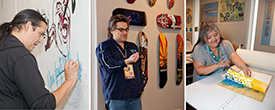
Melanie Yazzie, Gregg Deal, and Walt Pourier
Melanie Yazzie, Gregg Deal, Walt Pourier: Action X Community X Togetherness
Denver Art Museum
100 W 14th Avenue Pkwy, Denver, CO
May 6–September 7, 2017
Alumni of the Native Arts Artists-in-Residence program at the Denver Art Museum return for a summer of collaboration and creation. Melanie Yazzie, Gregg Deal, and Walt Pourier are cocreating through a project titled Action X Community X Togehterness X.
The Native Arts Artists-in-Residence program kicked off in 2012 with Yazzie and has gone on to host many established and up-and-coming artists working across media. Yazzie, a sculptor, painter, printmaker, and installation artist, often collaborates with indigenous artists, including those from groups in New Zealand, Siberia, Australia, and Canada, among others. Her work is informed and shaped by personal experiences and tries to tell many stories about things both real and imagined. It follows the Diné dictum “walk in beauty” literally, creating beauty and harmony.
“My artwork is culturally based in my heritage of being a Diné (Navajo) person. The artworks stem from the thought and belief that what we create must have beauty and harmony from within ourselves, from above, below, in front, behind and from our core. We are taught to seek out beauty and create it with our thoughts and prayers. I feel that when I am making my art, be it a print, a painting or a sculpture, I begin by centering myself and thinking it all out in a ‘good way,’ which is how I was taught from an early age. My work speaks about travel and transformation.”
In the joint projects Yazzi, Deal, and Pourier will host talks, tours, and workshops at two Untitled Final Fridays, on July 28, and August 25. They will hold a hands-on artmaking workshop at the Friendship Powow and American Indian Cultural Celebration on September 9 also.
New Nominating Committee Members
posted by CAA — June 12, 2017
CAA is pleased to announce the members of the 2017–2018 Nominating Committee, which is charged with identifying and interviewing potential candidates for the Board of Directors and selecting the final slate of candidates for the membership’s vote. The committee members, their institutional affiliations, and their positions are:
- Jim Hopfensperger, Western Michigan University, Vice President for Committees, and Chair
- Hunter O’Hanian, CAA Executive Director and CEO
- Helen C. Frederick, Professor, School of Art & Design, George Mason University
- Sarah A. Lichtman, Asst. Professor, Director, Design-Curatorial Studies, Parsons School of Design
- Gunalan Nadarajan, Dean/Professor, Stamps School of Art & Design, University of Michigan
- Steven Nelson, Director, UCLA African Studies Center, UCLA Department of Art History
- Steve A. Prince, Assistant Professor of Art, Artist-in-Residence, Black Studies, Allegheny College
- Alison Syme, Associate Professor, Chair, Department of Visual Studies, University of Toronto
- David C. Terry, Director of Programs, Curator, New York Foundation for the Arts
The 2016–2017 Nominating Committee chose the new members of the committee at its business meeting held during the 2017 Annual Conference in New York in February. The Board of Directors also appointed four liaisons. CAA publishes a call for nominations and self-nominations for Nominating Committee service on the website in late fall of every year and publicizes it in CAA News. Please direct all queries regarding the committee to Vanessa Jalet, CAA Executive Liaison.
CWA Picks for June 2017
posted by CAA — June 09, 2017
Each month, CAA’s Committee on Women in the Arts selects the best in feminist art and scholarship. The following exhibitions and events should not be missed.
Julia Jacquette: Unrequited and Acts of Play; Playground of My Mind
Ruth and Elmer Wellin Museum of Art
Hamilton College, 198 College Hill Road, Clinton, NY
February 18–July 2, 2017
In her first major museum retrospective, artist Julia Jacquette unveils two exhibitions, Unrequited and Acts of Play and Playground of My Mind, at the Wellin Museum of Art in Clinton, New York. Curated by Tracy L. Adler, the Johnson-Pote Director of the Wellen Museum, Unrequited focuses on commercialized objects of desire, “exposing our seemingly insatiable longing for the ideal.” Known for taking her inspiration from cookbooks and contemporary food magazines, Jacquette presents “these material trappings … often close up, in crisply detailed paintings that both profess and resent such desires and the complications they present personally, socially, and culturally.”
“I feel the gender of food is an under discussed topic. The kind of food images I use are a kind of highly styled food, that I think was and is targeted at women—food that looks like it is achieving a kind of domestic perfection,” Jaquette said in an interview with Maxwell Williams.
Running simultaneously, Playground of My Mind is a graphic memoir based on the “adventure playgrounds” of New York City and Amsterdam during the 1970s. “These structures encouraged constructive, imaginative play and gave renewed life to utopian notions of American and European modernist architecture.” Jacquette’s father codesigned one for Central Park. The body of work, comprised of gouache drawings and an illustrated artist book, explores their influence on Jaquette’s aesthetic.
The exhibit also includes space for community-organized, play-oriented projects based on the project. A schedule is available online.
Michelle Vosper: Creating Across Cultures: Women in the Arts from China, Hong Kong, Macau and Taiwan
Book
ISBN9789881604705
Released February 2017 by Muse Press
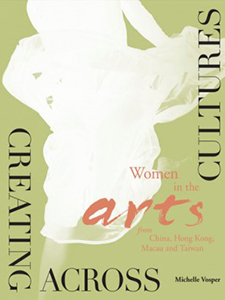
Creating Across Cultures: Women in the Arts from China, Hong Kong, Macau and Taiwan presents essays by journalists, scholars, and artists celebrate the artistic achievements of sixteen visionary women. Edited by Michelle Vosper, formerly the Asian Cultural Council Representative, the 360-page, hardback book profiles contemporary artists such as Yin Xiuzhen 尹秀珍, visual artist, and Lulu Hou 侯淑姿, photographic artist.
“These courageous women often had to defy cultural expectations in order to heed their artistic drive. Their artworks delve into the social realities of their times, and their personal stories provide an intimate portrait of the historical trajectory of Greater China over three generations.”
Other artists profiled include Nieh Hualing 聶華苓, author; Liao Wen 廖雯, art critic and curator; Candace Chong 莊梅岩, playwright; Choi Yan Chi 蔡仞姿 , artist and educator; Jaffa Lam 林嵐, installation artist; Yang Lina 楊荔鈉, filmmaker; Bun-Ching Lam 林品晶, composer; Wang Xinxin 王心心, Nanguan performer; Tian Mansha 田蔓莎, Sichuan Opera performer; Wu Na 巫娜, guqin musician; Yang Meiqi 楊美琦, modern dance pioneer; Pisui Ciyo 碧斯蔚 .梓佑, dancer/choreographer/vocalist; Mui Cheuk Yin 梅卓燕, dancer/choreographer; and Wen Hui 文慧, dancer/choreographer.
The essay authors include Liza Bielby, Christina Yuen Zi Chung, Samantha Culp, Valerie C. Doran, Jennifer Feeley, Georg Kochi, Tina Li Ying Ma, Terry O’Reilly, Ralph Samuelson, Clare Tyrrell-Morin, and Sasha Su-Ling Welland.
Octavia E. Butler: Telling My Stories
Huntington Library, Art Collections, and Botanical Gardens
1151 Oxford Road, San Marino, CA
April 8–August 7, 2017
Last year, Julia Meltzer (curator and director of the Clockshop) invited twelve artists and writers to mine the archives of Pasadena-based sci-fi writer Octavia E. Butler, who had passed away some ten years before. Because Butler gave her archive to the Huntington, much of the research for the new works and writings occasioned by Meltzer’s show happened in the Huntington’s library. Entitled Radio Imagination, that exhibition was a meditation on some of the key themes in Butler’s works (disenfranchisement, survival, the power of the mind) as well as the tricky business of re-presenting stories, documents, and a life that remains under recognized.
Now the Huntington has entered the fray with their own exhibition, this one tightly focused on the contents of Butler’s archives. It includes some of the early writings (and a really wonderful drawing of two horses) the author composed while still a child, as well as drafts of books and stories. Butler had a habit of color coding her documents, making notes with brightly colored highlighters—so these pieces of paper often have a striking visual quality. But it is the words, the prose, and the bare-bones reflections of an author working arduously to always do better that are really the stars here. In a letter sent to her mother from a pit of despair while at (what would be the first of many visits to) the Clarion Science Fiction and Fantasy Writer’s Workshop, Butler beats herself up for being blocked, and for not getting more accomplished. For a writer who was fairly private while she lived, these documents can be a revelation regarding the vulnerabilities of process, the messiness of affect, and the rigor of a brilliant mind and storyteller.
Pia Camil: Bara Bara Bara
Dallas Contemporary
161 Glass Street, Dallas, TX
April 8–August 20, 2017
“Bara! Bara! Bara!” is the cry that vendedores make in the markets in Itzapalapa, one of the sixteen boroughs of Mexico City, to lure in buyers with the promise of cheap (“barato”) goods. For her solo exhibition at the Dallas Contemporary, Mexico-based artist Pia Camil transforms some of the most ubiquitous materials from these markets, T-shirts, into expansive fields of color. These shirts are often made in Mexico (and many other countries outside the US), sold to US consumers, and then, after trickling through second-hand stores, they are eventually shipped by the tonnage back to Mexico and Central America, where they are sold to new markets. The global circuit of vestments is well-trod ground in contemporary art, one example being Shinique Smith’s Bale Variants series (2009–14). But Camil’s project is differently expansive, both formally and conceptually.
Suspended from the vast ceiling of the Dallas Contemporary’s warehouselike space, Camil’s t-shirt sheets look like low-hanging clouds, droopy body parts (bellies, breasts, asses), or, in a call-back to the site of acquisition, the informal coverings of outdoor markets. Because each of these works is called Divisor Pirata, they bear some relation to Lygia Pape’s Divisor, first performed in 1967–68. In that performance, participants from the streets of Rio de Janeiro filled in the holes of a large white piece of fabric and then travelled as a communal body through the streets. Indeed, Camil’s sheets are full-up with performance potential: viewers are invited to stick their heads through the neck holes, thus changing their perspective and relationship to these forms. What once operated like a covering now functions as a shifting new ground, rolling and roiling.
We Wanted a Revolution: Black Radical Women, 1965–85
Brooklyn Museum
200 Eastern Parkway, Brooklyn, New York 11238-6052
April 21–September 17, 2017
After almost fifty years after the groundbreaking show of contemporary black women artists, Where We At, the Brooklyn Museum has organized a landmark exhibition to honor and extend the work of these art activists. As its organizers proudly proclaim, We Wanted a Revolution: Black Radical Women, 1965–85 “is the first exhibition to highlight the voices and experiences of women of color—distinct from the primarily white, middle-class mainstream feminist movement—in order to reorient conversations around race, feminism, political action, art production, and art history in this significant historical period.” Featuring a wide array of media—film, performance, conceptual and video art, as well as painting, sculpture, photography, and print media—We Wanted a Revolution captures the energy and vitality of these critical interventions into the art practices of this formative era. Simply put, this exhibition is a must-see.
The artists represented in the exhibition include Emma Amos, Camille Billops, Kay Brown, Vivian E. Browne, Linda Goode Bryant, Beverly Buchanan, Carole Byard, Elizabeth Catlett, Barbara Chase-Riboud, Ayoka Chenzira, Christine Choy and Susan Robeson, Blondell Cummings, Julie Dash, Pat Davis, Jeff Donaldson, Maren Hassinger, Janet Henry, Virginia Jaramillo, Jae Jarrell, Wadsworth Jarrell, Lisa Jones, Loïs Mailou Jones, Barbara Jones-Hogu, Carolyn Lawrence, Samella Lewis, Dindga McCannon, Barbara McCullough, Ana Mendieta, Senga Nengudi, Lorraine O’Grady, Howardena Pindell, Faith Ringgold, Alva Rogers, Alison Saar, Betye Saar, Coreen Simpson, Lorna Simpson, Ming Smith, and Carrie Mae Weems.
The exhibition is accompanied by a sourcebook, edited by Catherine Morris and Rujeko Hockley and published by Duke University Press, which reprints important essays, correspondence, critiques, and manifestoes from key figures in this movement. Authors include Gloria Anzaldúa, James Baldwin, bell hooks, Lucy R. Lippard, Audre Lorde, Toni Morrison, Lowery Stokes Sims, Alice Walker, Michelle Wallace, and others.
Peju Alatise: Flying Girls, Nigerian Pavilion, 57th Venice Biannale
Scoletta dei Battioro e dei Tiraoro
Campo San Stae, 1980 30135, Venice, Italy
May 13–November 26, 2017
In this historic exhibition, the first-ever Nigerian Pavilion at the Venice Biannale, artist Peju Alatise takes the theme “How About NOW?” seriously. Her contribution to the Nigerian pavilion is an installation titled Flying Girls. Made over a three-year period from 2013–16, it is composed of eight black-painted and life-sized figures of girls, standing in a circle, who appear to have sprouted wings. Above them hovers a flock of birds. The work is a clear reference to the ongoing kidnapping and sexual enslavement of the Nigerian girls by Boko Haram. Flying Girls alludes to a character in one of Alatise’s books, a Yoruban girl who has been sold into domestic servitude and who dreams she belongs to no one but herself and can escape her imprisonment through flight.
Alatise, who was trained as an architect and is a renowned poet and novelist as well as a visual artist, is committed to producing works that addresses the social, political, and gender issues facing her country, with particular attention to what womanhood means within these contemporary contexts. She said this of her contribution to the Nigerian Pavilion: “I thought I would give a voice to the most vulnerable, which is the young black girl—especially in Nigeria,” she says. “It’s not necessarily focusing on that label, but the vulnerability of the girl child and the fact we do not have the government, cultural knowledge and aspiration to do something to help the girl child.”
CWA Picks for May 2017
posted by CAA — May 01, 2017
Each month, CAA’s Committee on Women in the Arts selects the best in feminist art and scholarship. The following exhibitions and events should not be missed.
Louise Lawler: A Movie Will Be Shown Without a Picture
Museum of Modern Art
11 W 53 Street, New York, NY
May 2 and 10, 2017
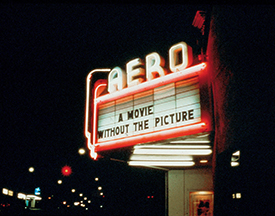
Marquee for A Movie Will Be Shown Without the Picture, Aero Theatre, Santa Monica, California, December 7, 1979 (photograph by Louise Lawler)
An appropriately deadpan announcement, now in the collection of the Metropolitan Museum of Art, for Louise Lawler’s cinematic event A Movie Will Be Shown Without A Picture (1979), reproduced the work’s title on a flat black card. Indeed, this is what viewers to the Aeron Theater in Santa Monica would have encountered on the night of Lawler’s event: a film shown without its flickering image. We might understand Lawler’s gesture as a riposte to Laura Mulvey’s influential text “Visual Pleasure and Narrative Cinema,” published five years before in the British film journal Screen. The filmic performance deprives audiences of the picture of the chosen film (the film changes with each iteration), instead asking them to rely on sound and soundtrack. Thus viewers are left to imagine and project their own fantasies (if they haven’t seen the film) or cobble together their memories of the film (if they have). As an arm of the programming for Louise Lawler’s retrospective at the Museum of Modern Art in New York, A Movie Will Be Shown Without a Picture will be screened two times.
Black Women Artists for Black Lives Matter
Project Row Houses
2521 Holman St., Houston, TX
March 25–June 4, 2017
Usually the curatorial and programming staff at Project Row Houses determine a theme and invite a series of artists to make installations and public programming inside the block of row houses in Houston’s Third Ward. This time Public Art Director Ryan Dennis and artist Simone Leigh cocurated the round to be exclusively for Black Women Artists for Black Lives Matter, a collective group that Leigh founded during her residency at the New Museum last year, and which now has chapters in London, Los Angeles, and Chicago. Performances, installations, platforms for dialogue and activation—these are the things that tie Project Row Houses and Black Women Artists for Black Lives Matter together. What began with an incubation period to get Houston’s chapter of BWA for BLM started, and was inaugurated with a processional performance, is now a full-tilt community platform for building generative ideas and actions for entering into the movement. As if to sum up the sentiments of the current round, one of the row houses is emblazoned with a supergraphic of the following sentiment: “YOU’VE GOTTA LOVE US OR LEAVE US ALONE.”
Katharina Fritsch: Multiples
Walker Art Museum
725 Vineland Place, Minneapolis, Minnesota
May 11–October 15, 2017
Katharina Fritsch’s sculpture, which seeks to defamiliarize the familiar and query the boundaries between the natural and the symbolic, will be on view at the Walker Art Museum for the next several months. Animals, religious figurines, body parts, and other objects drawn from the history and fairy tales of her native Germany take one new meanings when color, scale, and materials of everyday objects are altered. The show will include some forty objects, ranging from her early work as a student to her more recent pieces, drawn from the museum’s permanent collection. Katharina Fritsch: Multiples is a companion exhibition to the installation of her monumental, ultramarine blue Hahn/Cock in the Minneapolis Sculpture Garden in June. Described by the artist as “a feminist sculpture,” this work was first displayed on the fourth plinth in Trafalgar Square in the summer of 2013.
Musée Camille Claudel
Musée Camille Claudel
10, rue Gustave Flaubert, 10 400 Nogent-sur-Seine, France
Opened March 26, 2017
At long last, the beloved nineteenth-century French sculptor and feminist art icon Camille Claudel is receiving her due with a museum devoted to her work. Located in the small town of Nogent-sur-Seine, the Musée Camille Claudel is built around the family home where she spent her early adolescence. After a temporary exhibition of her work in 2003 brought over forty thousand visitors to Nogent-sur-Seine (pop. 6,000), it was determined that a museum dedicated to its most famous resident was in order. The Musée Camille Claudel now houses the world’s largest collection of the sculptor’s work. Visitors, who will be gratified to see such well-known pieces as The Waltz and The Gossips, will also be able to discover similarly remarkable works such as Abandon and Fortune. It takes under an hour by train to reach Nogent-sur-Seine from Paris.
Power: Work by African American Women from the Nineteenth Century to Now
Sprüth Magers
5900 Wilshire Blvd, Los Angeles, CA
March 29–June 10, 2017
The exhibition Power at Sprüth Magers features thirty-seven African American women artists from the nineteenth century until now. Works span fine-art and folk-art traditions covering multiple mediums, including painting, photography, video, sculpture, and installation. The title of the exhibition takes its name from a 1970 gospel song by Sister Gertrude Morgan, a self-taught, musician, poet, artist, and preacher. The works, engaging in issues of race, gender, and class, trace the threads of the craft-based folk traditions to a newer, academically trained generation of artists, depicting the “struggle to establish themselves as equal players on the uneven field of the American republic.”
In a review of the show published in the Los Angeles Times on April 11, 2017, the author Leah Ollman writes, “Artists here treat the physical body and the emblematic body of the nation as contested sites. Historical trauma persists within both, and both serve as ready—if not always willing—vehicles for self-determination.”
Artists in the exhibition, which was curated by Todd Levin, include: Beverly Buchanan, Elizabeth Catlett, Sonya Clark, Renee Cox, Njideka Akunyili Crosby, Karon Davis, Minnie Evans, Nona Faustine, LaToya Ruby Frazier, Ellen Gallagher, Leslie Hewitt, Clementine Hunter, Steffani Jemison, Jennie C. Jones, Simone Leigh, Julie Mehretu, Sister Gertrude Morgan, Senga Nengudi, Lorraine O’Grady, Sondra Perry, Howardena Pindell, Faith Ringgold, Betye Saar, Joyce J. Scott, Emmer Sewell, Ntozake Shange, Xaviera Simmons, Lorna Simpson, Shinique Smith, Renee Stout, Mickalene Thomas, Alma Woodsey Thomas, Rosie Lee Tompkins, Kara Walker, Meta Vaux Warrick Fuller, Carrie Mae Weems, and Brenna Youngblood.
Power will also include an installation of over one hundred African American vernacular photographs from the early twentieth century on loan from the Ralph DeLuca Collection. They offer a diverse view into everyday lives of African American women, from images of positive change to difficult scenes of negative stereotyping and violence. Offered as an exhibition-within-an-exhibition, these images from a century ago encourage reflection upon the continued struggles of black lives in America today.
We Wanted a Revolution: Black Radical Women, 1965–85
Brooklyn Museum
Elizabeth A. Sackler Center for Feminist Art and Stephanie and Tim Ingrassia Gallery of Contemporary Art, Fourth Floor, 200 Eastern Parkway, Brooklyn, New York
April 21–September 17, 2017
The exhibition We Wanted a Revolution: Black Radical Women, 1965–85 explores the intersections of avant-garde art worlds, radical political movements, and profound social change through photography, sculpture, printmaking, photography, performance, film, and video. Examining the political, social, cultural, and aesthetic priorities of women of color during the emergence of second-wave feminism, this exhibition is the first “to highlight the voices and experiences of women of color—distinct from the primarily white, middle-class mainstream feminist movement—in order to reorient conversations around race, feminism, political action, art production, and art history in this significant historical period.”
The artists represented in the exhibition include: Emma Amos, Camille Billops, Kay Brown, Vivian E. Browne, Linda Goode Bryant, Beverly Buchanan, Carole Byard, Elizabeth Catlett, Barbara Chase-Riboud, Ayoka Chenzira, Christine Choy and Susan Robeson, Blondell Cummings, Julie Dash, Pat Davis, Jeff Donaldson, Maren Hassinger, Janet Henry, Virginia Jaramillo, Jae Jarrell, Wadsworth Jarrell, Lisa Jones, Loïs Mailou Jones, Barbara Jones-Hogu, Carolyn Lawrence, Samella Lewis, Dindga McCannon, Barbara McCullough, Ana Mendieta, Senga Nengudi, Lorraine O’Grady, Howardena Pindell, Faith Ringgold, Alva Rogers, Alison Saar, Betye Saar, Coreen Simpson, Lorna Simpson, Ming Smith, and Carrie Mae Weems.
A host of events accompanied the exhibition. In addition to the DJ reception on April 20, which paid tribute to the revolutionary music of black women, the week-long opening celebration also included a symposium on April 21, a Julie Dash film marathon on April 22, and a Black Lunch Table on April 23.
We Wanted a Revolution, organized by Catherine Morris, Sackler Family Senior Curator for the Elizabeth A. Sackler Center for Feminist Art, and Rujeko Hockley, former assistant curator of contemporary art at the Brooklyn Museum, is part of A Year of Yes: Reimagining Feminism at the Brooklyn Museum, a yearlong series of exhibitions celebrating the tenth anniversary of the Elizabeth A. Sackler Center for Feminist Art.


